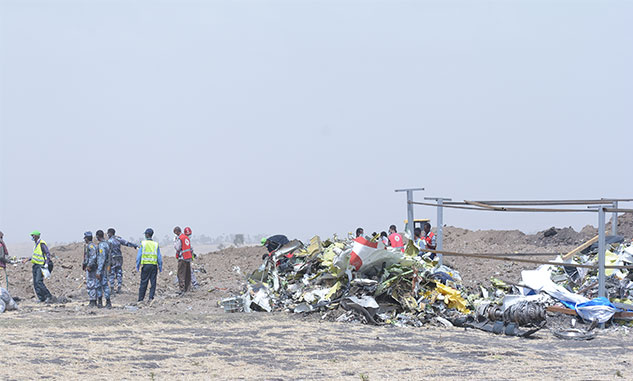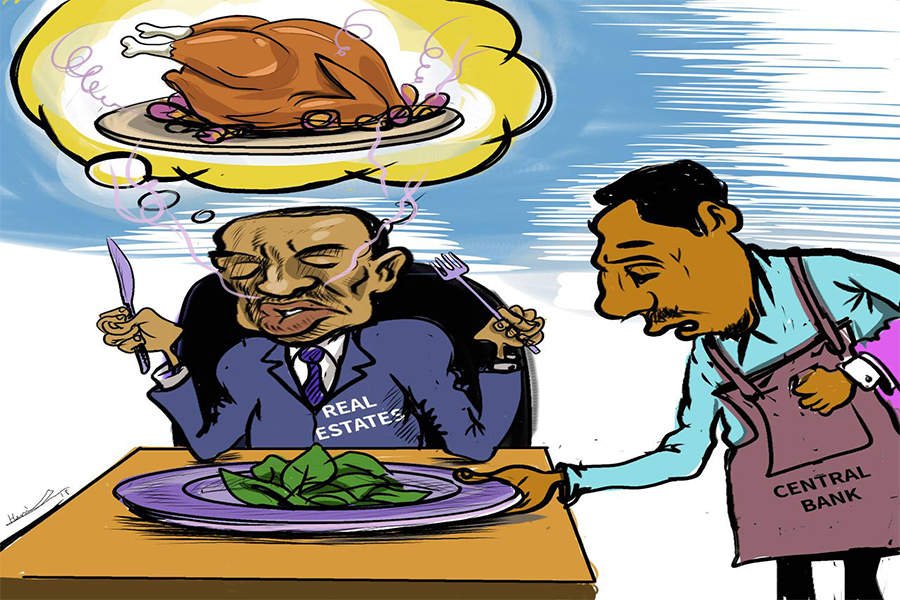
Radar | Nov 24,2024
The Ethiopian government is introducing a 10-year strategy to develop the bamboo industry. The strategy, which has been developed over the past three years, is scheduled for implementation beginning this year.
The strategy envisions which envisages bamboo becoming a major export commodity and supporting environmental rehabilitation, is expected to be approved by the Environment, Forest & Climate Change Commission in the coming week.
The ministries of Trade & Industry and Revenues, the Ethiopian Investment Commission, the Ethiopian Standard Agency, private investors and NGOs have participated in the drafting of the strategy. The Ethiopian Forest Policy & Strategy, Ethiopian Forest Development, Conservation & Utilisation proclamation and the Forest Sector Development Programme provided as inputs for the current strategy.
The strategic action plan document foresees increasing the national bamboo forest coverage by 14pc from the existing 1.4 million hectares. It also plans to sustainably manage 200,000ha of existing bamboo cover, create employment opportunities for half a million people and grow income from the sector by 10pc annualy.
Increasing public awareness of the resource and improving the capacity of the growers involved in the entire value chain is also one of the objectives of the strategy.
Bamboo, which reaches full growth maturity in three to five years and is fast reproduction, has been used for subsistence by smallholder farmers for building fences, traditional houses, basic furniture and household tools, according to Fiker Assefa, a Bamboo expert at International Network for Bamboo & Rattan (INBAR).
Tsinghua, a research university in Beijing, and INBAR conducted an inventory of bamboo in Ethiopia in 2018, which found that there are three million hectares of potential land for bamboo development. While there are 1,642 known species of the plant around the world, it is generally classified as two types in Ethiopia, lowland and highland bamboo.
There is a market for value-added bamboo, including for flooring, toothpicks, table mats and incense sticks.
“It is the only plant that fulfils all the three necessities, shelter, food and clothing,” said Fiker.
Even though Ethiopia has the largest bamboo forest cover in Africa, insiders point out that it is unutilised. While earning less than a quarter of a million dollars from the export of bamboo poles, the nation imports on average 5.7 million dollars of bamboo plywood, pulp and paper, furniture and flooring.
Messay Mulugeta (Prof.), lecturer and researcher for more than a decade and a half in Addis Abeba University's College of Development Studies, appreciates the focus the industry is being given.
“Preparing a specific strategy for the industry is the best way of ensuring utilisation of the resource to the maximum,” he said.
PUBLISHED ON
Apr 26,2019 [ VOL
20 , NO
991]

Radar | Nov 24,2024

Fortune News | Oct 17,2020

Radar | Jan 12,2019

Fortune News | Jun 01,2019

Fortune News | Sep 07,2025

Fortune News | Jul 06,2019

Fortune News | Apr 25,2020

Radar | Apr 16,2022

Radar | May 24,2025

Fortune News | Apr 17,2021

Dec 22 , 2024 . By TIZITA SHEWAFERAW
Charged with transforming colossal state-owned enterprises into modern and competitiv...

Aug 18 , 2024 . By AKSAH ITALO
Although predictable Yonas Zerihun's job in the ride-hailing service is not immune to...

Jul 28 , 2024 . By TIZITA SHEWAFERAW
Unhabitual, perhaps too many, Samuel Gebreyohannes, 38, used to occasionally enjoy a couple of beers at breakfast. However, he recently swit...

Jul 13 , 2024 . By AKSAH ITALO
Investors who rely on tractors, trucks, and field vehicles for commuting, transporting commodities, and f...

Oct 18 , 2025
The political establishment, notably the ruling party and its top brass, has become p...

Oct 11 , 2025
Ladislas Farago, a roving Associated Press (AP) correspondent, arrived in Ethiopia in...

Oct 4 , 2025
Eyob Tekalegn (PhD) had been in the Governor's chair for only weeks when, on Septembe...

Sep 27 , 2025
Four years into an experiment with “shock therapy” in education, the national moo...